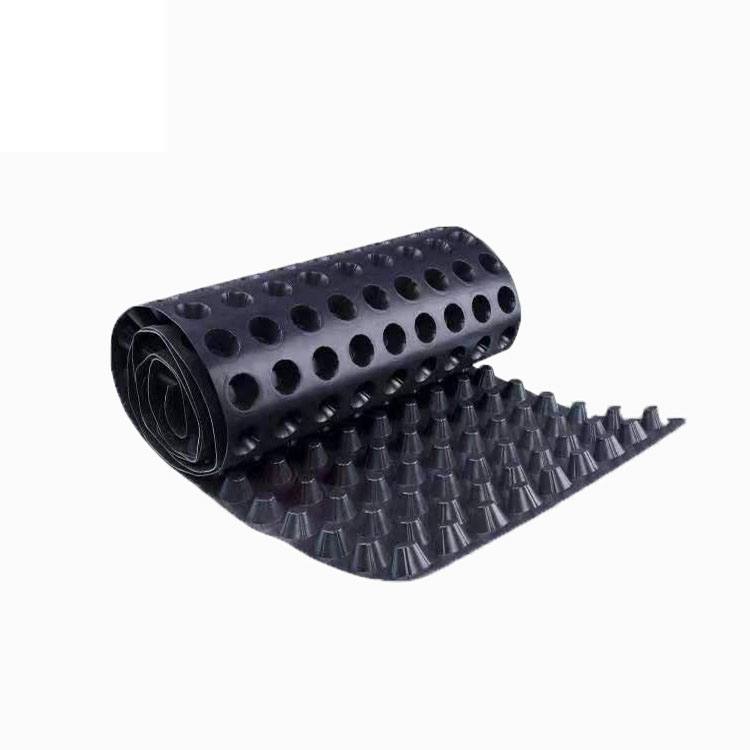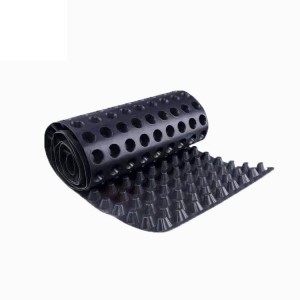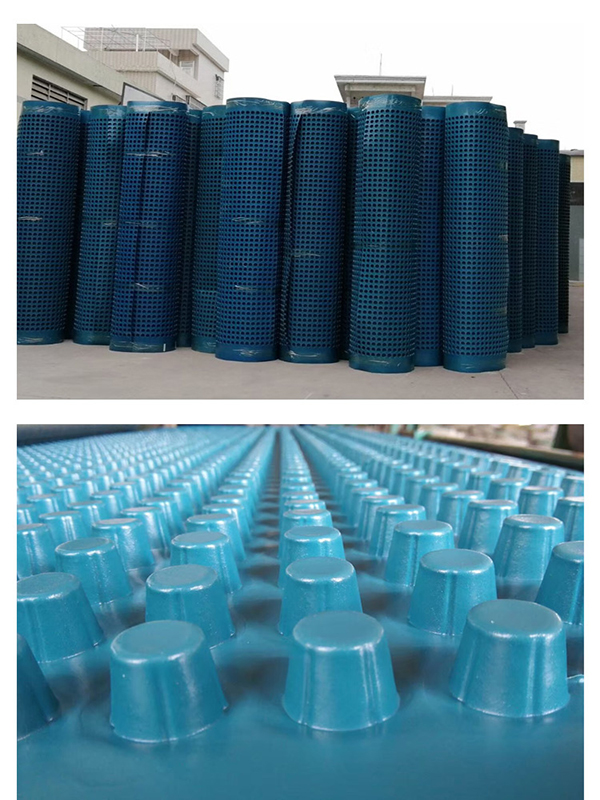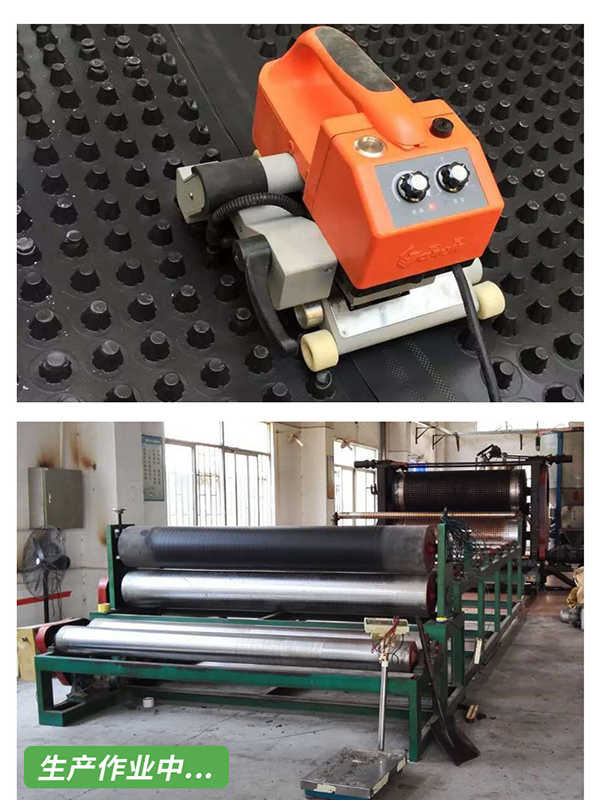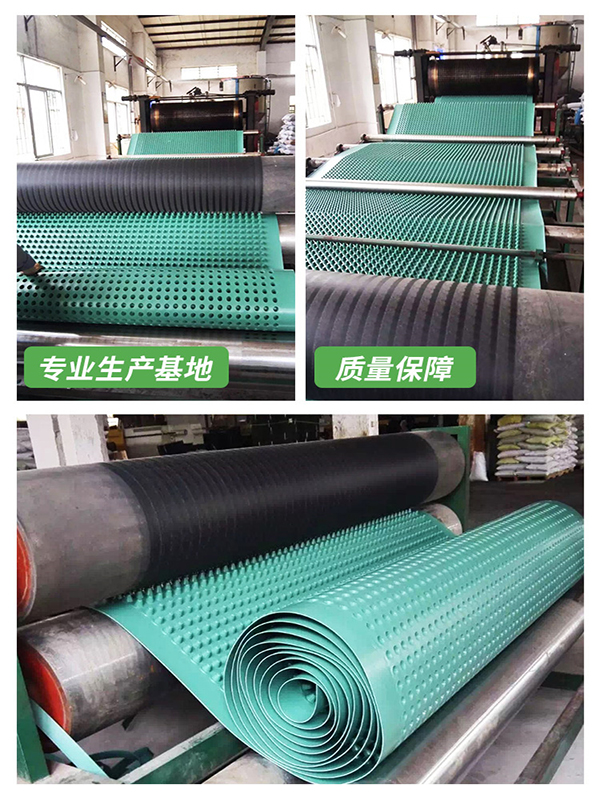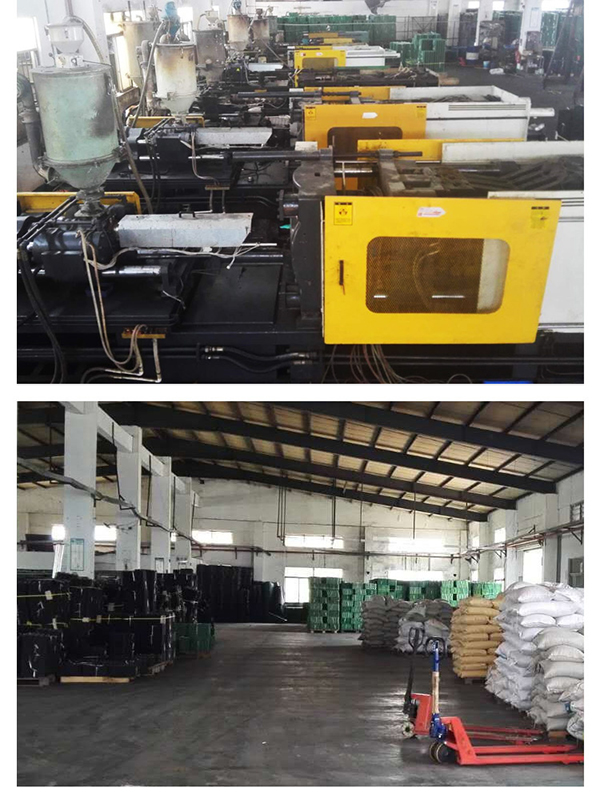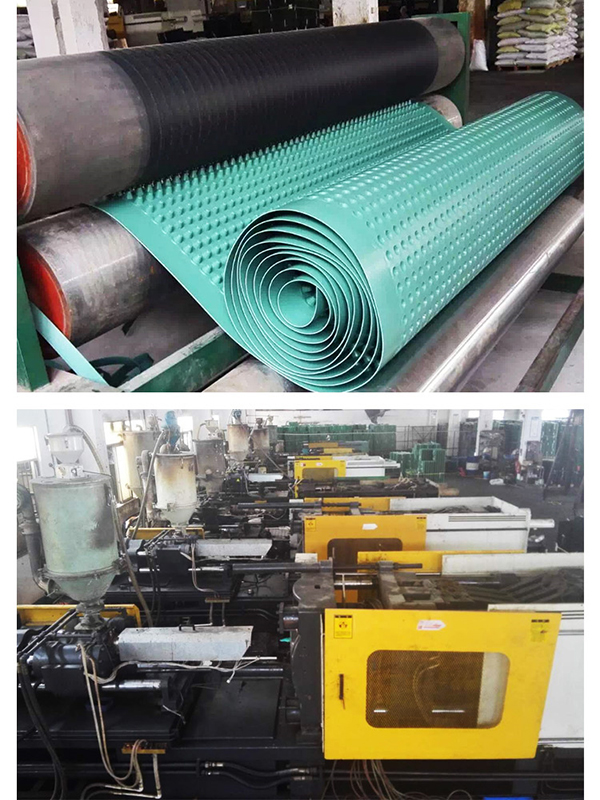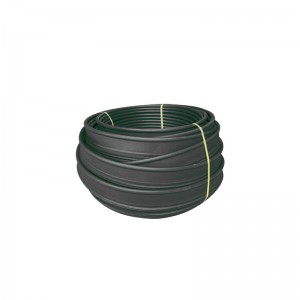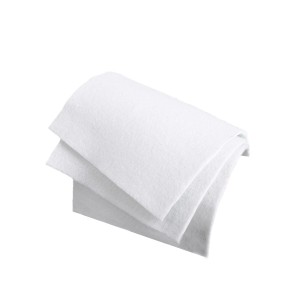Project plastic drainage plate|Coil Drainage Board
Greening project: garage roof greening, roof garden, vertical greening, sloping roof greening, football field, golf course.
Municipal engineering: airport, road subgrade, subway, tunnel, landfill.
Construction engineering: the upper or lower layer of the building foundation, the indoor and outdoor walls and bottom plates of the basement, as well as the roof, roof anti-seepage and heat insulation layer, etc.
Water conservancy projects: anti-seepage water in reservoirs, reservoirs, and artificial lakes.
Traffic engineering: highway, railway subgrade, embankment and slope protection layer.
water conductivity
The concave-convex hollow rib structure of the waterproof and drainage protection board can quickly and effectively drain rainwater, greatly reducing or even eliminating the hydrostatic pressure of the waterproof layer. Through this active water conduction principle, the effect of active waterproofing can be achieved.
Waterproof performance: Polyethylene (HDPE) polystyrene (PVC) waterproof and drainage protection board material itself is a good waterproof material. By adopting a reliable connection method, the waterproof and drainage board becomes a good auxiliary waterproof material.
protection
The waterproof and drainage protection board can effectively protect the structure and waterproof layer, and resist various acids and alkalis in the soil and root thorns of plants. It protects buildings and waterproofing from damage when backfilling basement exterior walls.
Sound insulation and ventilation and moisture-proof functions:
Laboratory data show that the polyethylene (HDPE) polyvinyl chloride (PVC) waterproof and drainage protection board can effectively reduce the indoor noise of 14 decibels, 500HZ, and has obvious noise reduction and sound insulation functions. When used on the ground or on the wall, the waterproof water deflector can also play a good role in ventilation and moisture resistance.
1. What to pay attention to in construction?
1)Please store the drainage board in a dry and ventilated environment, prevent exposure to sunlight, and keep away from fire sources.
2)Please place the drainage protection board vertically or horizontally, do not tilt or cross horizontally, the stacking height should not exceed 3 layers, and heavy objects should not be stacked.
3)When laying, it should be flat and natural, and lay along the slope or according to the water flow.
2. How many categories of drainboards are there?
Commonly used drainage boards in construction include: plastic drainage boards, storage drainage boards, coiled material drainage boards, anti-seepage drainage boards, composite drainage boards, three-dimensional drainage boards, sheet-like drainage boards, etc.
3. Where is it usually used?
Greening project: garage roof greening, roof garden, vertical greening, sloping roof greening, football field, golf course.
Municipal engineering: airport, road subgrade, subway, tunnel, landfill.
Construction engineering: the upper or lower layer of the building foundation, the indoor and outdoor walls and bottom plates of the basement, as well as the roof, roof anti-seepage and heat insulation layer, etc.
Water conservancy projects: anti-seepage water in reservoirs, reservoirs, and artificial lakes.
Traffic engineering: road, railway subgrade, embankment and slope protection
4. How to install?
1) Clean up the garbage on the laying site and level the cement so that there are no obvious bumps on the site. The roof of the outdoor garage and the roof garden need to have a slope of 2-5‰.
2) It can concentrate the water discharged from the drainage board to the nearby sewer or the nearby city sewer.
3) The ground of the basement is water-proof, and the floor is raised above the foundation, that is, a layer of drainage board is made before the floor is made, and the round protruding platform is downward, and there are blind ditches around it, so that the groundwater cannot come up, and seepage water naturally passes through The space of the drainage board flows into the surrounding blind ditches, and then flows into the sump through the blind ditches.
4) The inner wall of the basement is water-proof, and the drainage board can be laid on the main wall of the building, and the round protruding table faces the main wall. A layer of single wall is built outside the drainage board or steel mesh powder cement is used to protect the drainage board, so that the space of the seepage board outside the wall flows straight down into the blind ditch until the sump.
5) When laying a drainage board in any section, you must pay attention: do not let dirt, cement, yellow sand and other garbage enter the front space of the drainage board to ensure that the space of the drainage board is unobstructed.
6) Take protective measures as much as possible when laying the drainage board. When laying the drainage board on the floor or outdoor garage, backfill should be done as soon as possible to prevent the strong wind from blowing the drainage board and affecting the laying quality. The waterproofing of the basement and interior walls should be done as soon as possible to prevent the drainage board from being damaged by people or things.
7) The backfill is cohesive soil. It is ideal to lay 3-5 cm of yellow sand on the geotextile, which is beneficial to the water filtration of the geotextile; if the backfill is a kind of nutrient soil or light soil, there is no need to lay another layer. Layer of yellow sand, the soil itself is very loose and easy to filter water.
8) When laying the drainage board, the next 1-2 fulcrums can be placed on the side and the right side, or the two bottom plates can be aligned, and the tops are overlapped with geotextiles. As long as no soil enters the drainage channel of the drainage board, it is enough to keep the drainage smooth.

